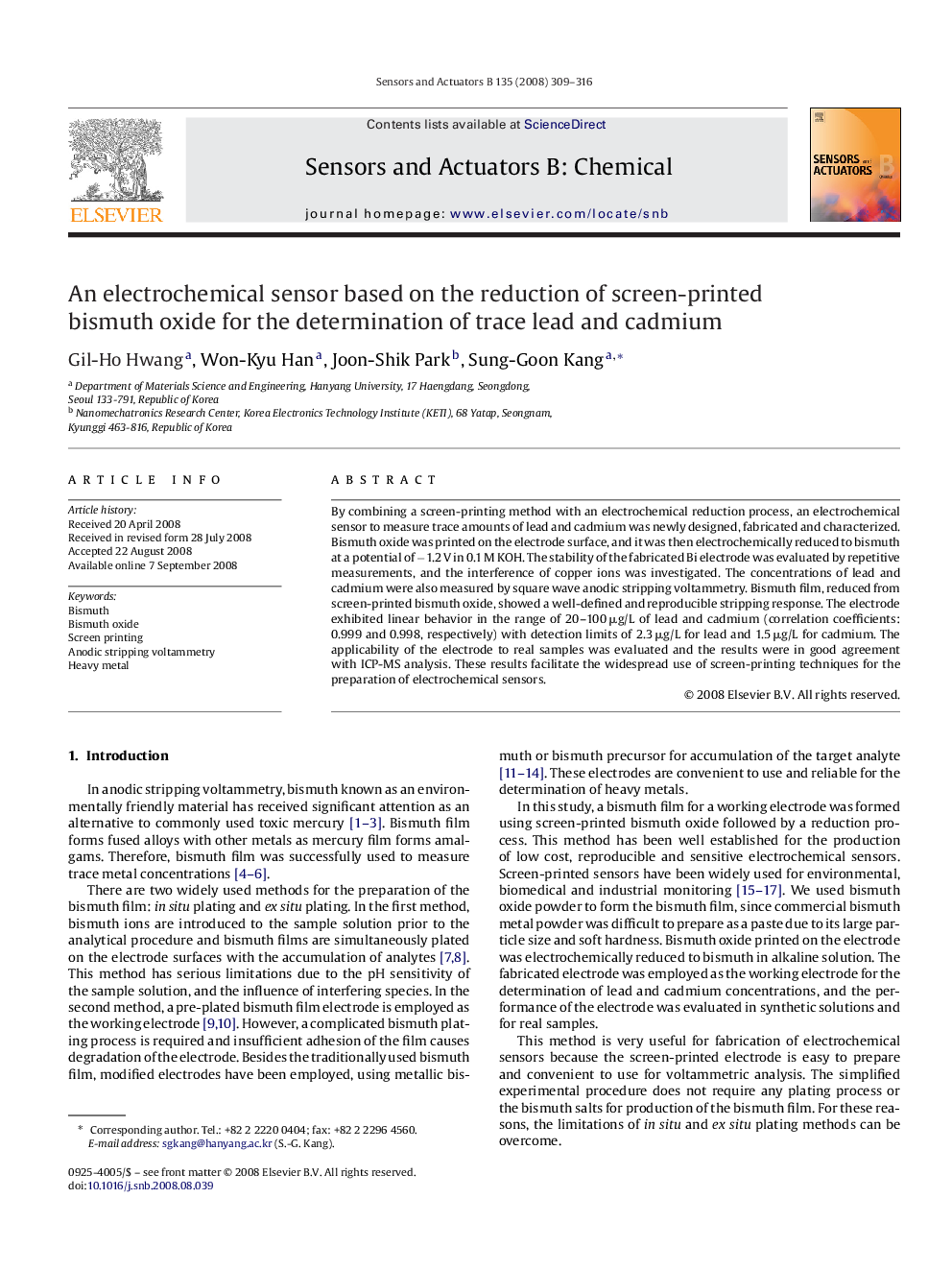| Article ID | Journal | Published Year | Pages | File Type |
|---|---|---|---|---|
| 741164 | Sensors and Actuators B: Chemical | 2008 | 8 Pages |
By combining a screen-printing method with an electrochemical reduction process, an electrochemical sensor to measure trace amounts of lead and cadmium was newly designed, fabricated and characterized. Bismuth oxide was printed on the electrode surface, and it was then electrochemically reduced to bismuth at a potential of −1.2 V in 0.1 M KOH. The stability of the fabricated Bi electrode was evaluated by repetitive measurements, and the interference of copper ions was investigated. The concentrations of lead and cadmium were also measured by square wave anodic stripping voltammetry. Bismuth film, reduced from screen-printed bismuth oxide, showed a well-defined and reproducible stripping response. The electrode exhibited linear behavior in the range of 20–100 μg/L of lead and cadmium (correlation coefficients: 0.999 and 0.998, respectively) with detection limits of 2.3 μg/L for lead and 1.5 μg/L for cadmium. The applicability of the electrode to real samples was evaluated and the results were in good agreement with ICP-MS analysis. These results facilitate the widespread use of screen-printing techniques for the preparation of electrochemical sensors.
